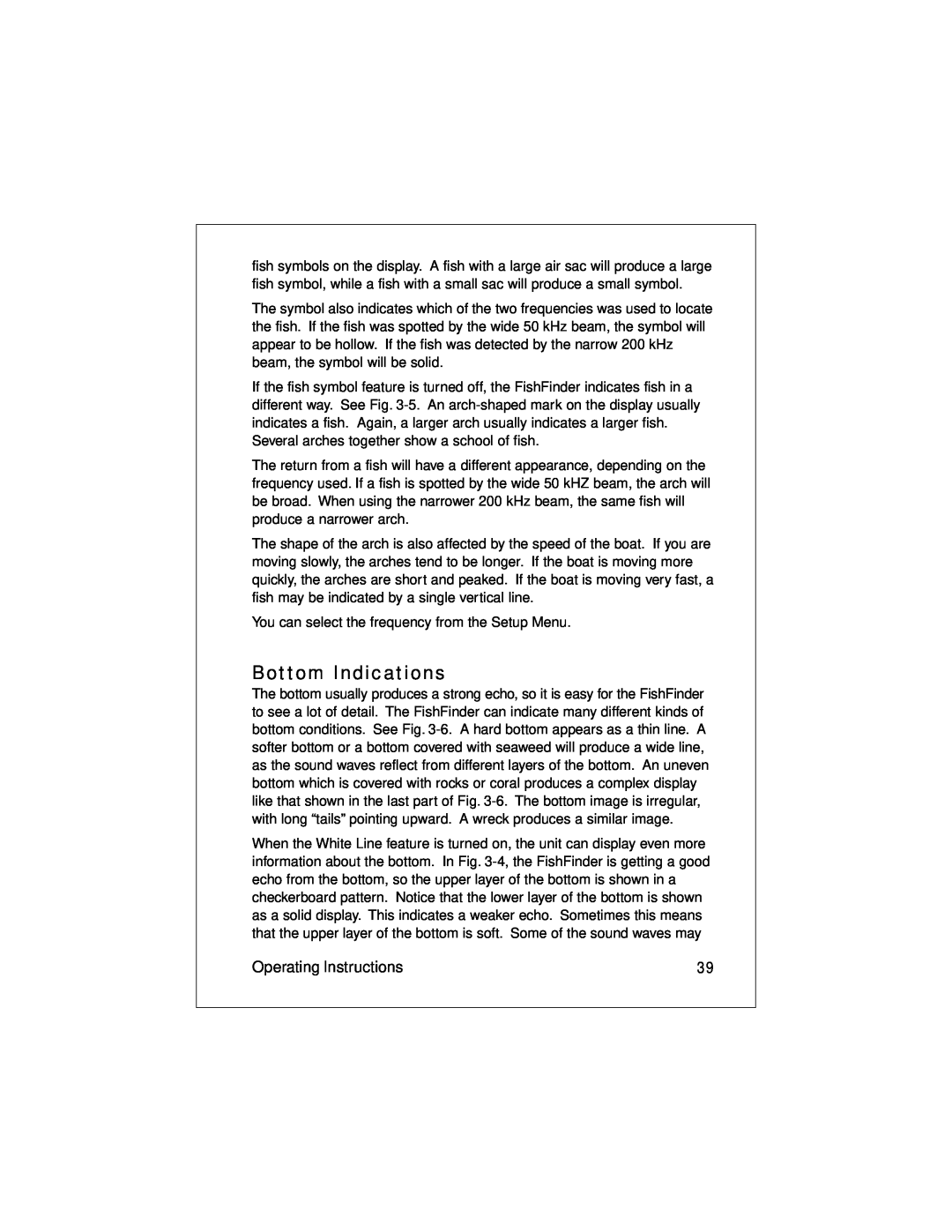
fish symbols on the display. A fish with a large air sac will produce a large fish symbol, while a fish with a small sac will produce a small symbol.
The symbol also indicates which of the two frequencies was used to locate the fish. If the fish was spotted by the wide 50 kHz beam, the symbol will appear to be hollow. If the fish was detected by the narrow 200 kHz beam, the symbol will be solid.
If the fish symbol feature is turned off, the FishFinder indicates fish in a different way. See Fig.
The return from a fish will have a different appearance, depending on the frequency used. If a fish is spotted by the wide 50 kHZ beam, the arch will be broad. When using the narrower 200 kHz beam, the same fish will produce a narrower arch.
The shape of the arch is also affected by the speed of the boat. If you are moving slowly, the arches tend to be longer. If the boat is moving more quickly, the arches are short and peaked. If the boat is moving very fast, a fish may be indicated by a single vertical line.
You can select the frequency from the Setup Menu.
Bottom Indications
The bottom usually produces a strong echo, so it is easy for the FishFinder to see a lot of detail. The FishFinder can indicate many different kinds of bottom conditions. See Fig.
When the White Line feature is turned on, the unit can display even more information about the bottom. In Fig.
Operating Instructions | 39 |
